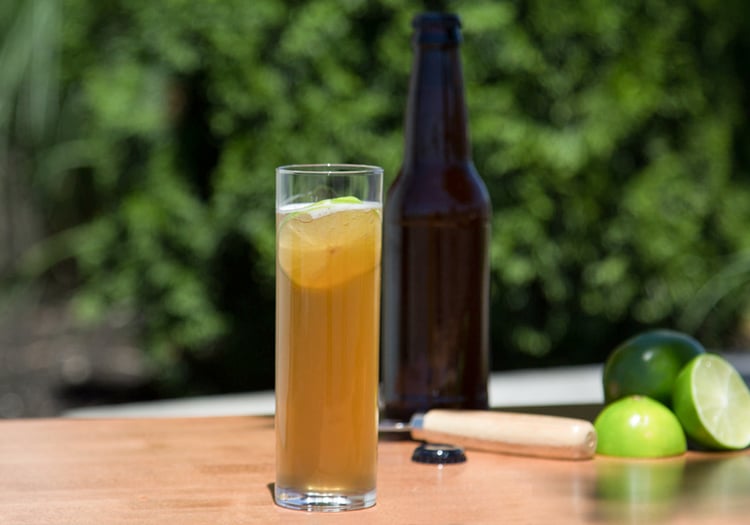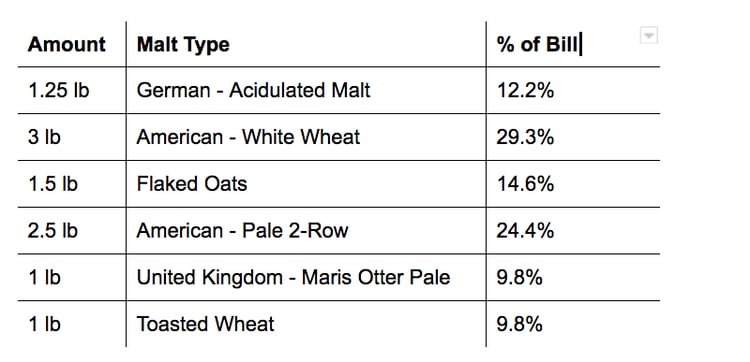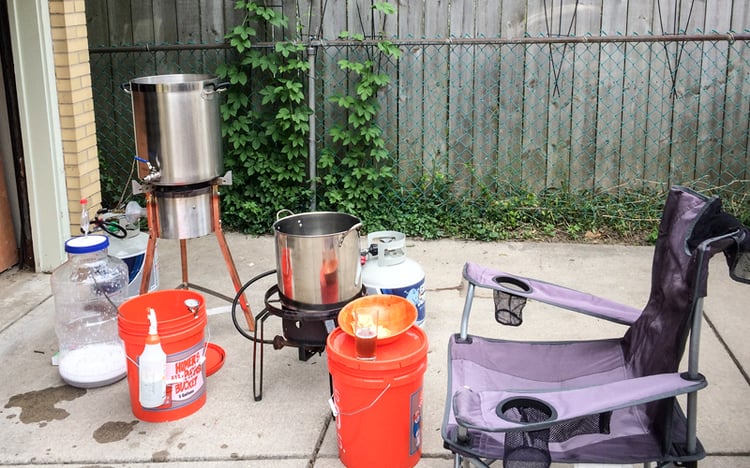
Gose (go-zuh) beers are a style that have been resurfacing recently, but the style is actually quite old. Some of its first documented brew notes date back to the early 16th century.

This lovely brew has such a delicate balance between salty and sour. The flavor profile is light and refreshing, with a hazy wheat and pilsner malt body. The aromas are filled with floral notes, and lemon and grapefruit scents are generally present as well. A typical Gose will have a fair amount of carbonation, which helps those prickly lemon and acidic notes shine. Once you have one of these ridiculously refreshing beers on a hot summer day, you will be a fan. And as an avid homebrewer, I just had to try my hand at one—but with my own spin.
I decided to try to brew a Gose-style sour beer with acidulated malt as an experiment, and the results were delicious! This enabled me to cut some time out of the process and get my sour beer much faster. There are other ways to create sourness in your beers, which you can read more about it our primer on sour methodology and specific styles, “Sour Beers 101.”
Beer Name: Gose the Gozerian (Ghostbusters, anyone?)

10.25 lb. of grain is our total amount, crush the wheats, and 2-row together. Add the flaked oats after the grain has been crushed and mix together. Keep the acidulated malt in a separate container.
Acidulated malt is a pale malt that has been sprayed with lactic acid and then set out to dry. The lactic acid content sprayed onto these malts vary from 1 to 3% by weight depending on the supplier. For this batch I used 1.25 lb. of acidulated malt. This will effectively give the beer a slight tartness in the end-product, which is not a screaming sour beer, but sour enough for my palette to enjoy.
I mashed in at 154 degrees for 45 minutes, then I added the acid malt to the mash for an additional 25 minutes. This late addition gives the regular malts enough time for the starches to convert into sugars. If you add the acidulated malts too early, it will negatively impact the overall sugar content of your wort.
Mash Guidelines:
5 gal, 155 F for 60 minutes. Sparge.
4 gal, 170 F for 10 minutes. Sparge.
I made hop additions at 40 minutes (Sorachi Ace) and 30 minutes (Hallertauer) for a bit of bitterness and a dash of floral/citrusy aroma. I was shooting for a decent hop flavor/bitter from the Sorachi and to accentuate the citrusy nature of the coriander I would be adding later in the boil with the Hallertauer, which has complementary aromatic qualities. There really only needs to be a little bit of alpha acids present to offset the sweetness and let the sourness have a bigger punch.

The next step is adding the type of salt you prefer to your beer. This addition is traditional to the Gose style because of the high amounts of salt that flows through the Gose river in Germany. It makes sense that their river water was used for the brewing process, giving the resulting beer a briney quality. Any grocery worth its salt (pun intended) should have a vast array of choices for you to choose from--kosher, sea salt, Cyprus salt, Himalayan, etc. Whatever you choose, make sure you taste it first! The sole purpose is to help balance flavors with the alkalinity of your beer. In the end, I bought some pink Himalayan salt, since it was not as assertive as the others that I sampled. I crushed it up and added it to my boil with about 15 minutes left, along with .5 ounces of ground coriander.
Last but not least, the yeast. I chose a clean strain of liquid yeast because the beer has a lot of complex flavors to consider. I didn’t want over complicate it by using a wild strain or anything that would offset the balance I’ve tried so hard to maintain with all the other ingredients in the mix. WYeast 1056 was my choice, although if you feel like taking a leap into our specialty yeasts check out all the wild choices we have available, including Brettanomyces, Farmhouse, Berliner Blends, Saisons, and so much more. For my brew, I just wanted to keep it simple with a clean ale yeast. Check out our blog article on how to make a basic yeast starter.
Lastly, the fermentation went really well. My two additions to the beer during secondary was the juice of two limes and the zest of one whole lime skin.
Original Gravity: 1.044
Final Gravity: 1.012
ABV: 3.92%
Served in a Stange German beer glass, with a fresh slice of lime (optional)
Let us know if you decide to brew this recipe. We’d love to know how it turns out for you. Happy brewing!



Leave a Comment